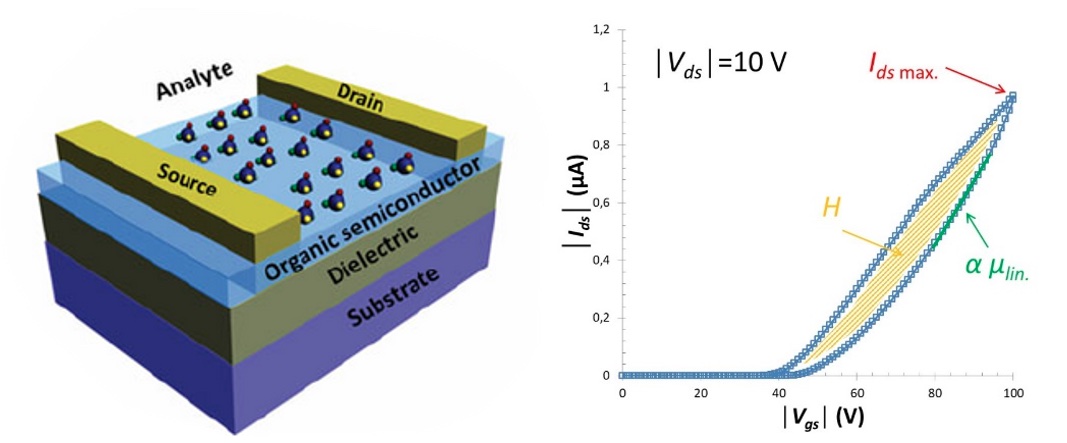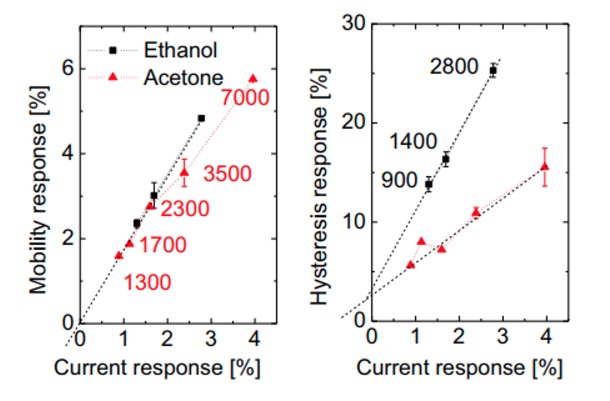
The sensors studied are mainly organic field effect transistors (O-FETs) whose channel is an organic semiconductor.
Certain electrical characteristics of O-FETs vary when exposed to analytes and analysis of these variations can ideally lead to the type of analyte and its concentration. Examples of analyte-sensitive electrical characteristics are maximum drain-source current (Ids max.), charge-carrier mobility (µ) or hysteresis (H).
Thanks to STELORG, it is possible to design and synthesize organic semiconductor molecules that respond specifically to a type of analyte, thus considerably increasing the selectivity of the sensors. On the other hand, the instrumental development within the consortium also allows to increase the sensitivity of the sensors. The targeted application areas range from health (electronic nose to diagnose diseases) to the environment (leaks detection).




